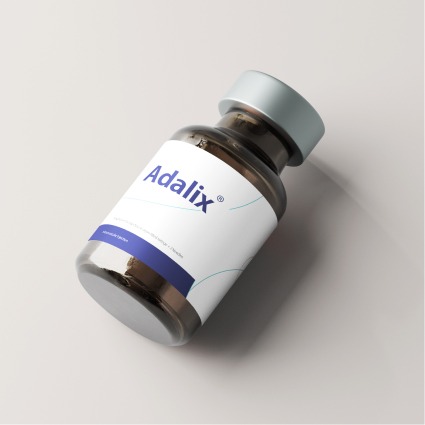Biosimilars: Science, Need, and the Role of Governments in Shaping Access
Over the last two decades, biologic medicines have revolutionized the treatment of autoimmune disorders, cancers, and rare diseases. These therapies, produced through living systems, have often been life-changing but also come with staggering costs. The global expansion of biologics has highlighted both a triumph of modern science and a crisis of affordability. Enter biosimilars—biologic medicines that are highly similar to an already approved biologic (known as the reference product), with no clinically meaningful differences in safety, purity, or potency.
This article explores what biosimilars are, why they are needed, and why governments worldwide play a crucial role in ensuring their development, regulation, and adoption.
What Are Biosimilars?
Definition and Characteristics
Biosimilars are biologic medicines developed to be similar in structure, function, and clinical performance to an originator biologic that has already received regulatory approval. Unlike generic drugs, which are chemically identical to their small-molecule counterparts, biosimilars cannot be exact copies due to the complexity of biologics and their production in living cells.
Key attributes of biosimilars include:
Similarity, not identicality
They match the reference product in terms of therapeutic activity, mechanism of action, and clinical effect but may differ slightly in structure (e.g., glycosylation patterns).
Rigorous comparability exercises
Regulators demand extensive analytical, preclinical, and clinical studies to demonstrate that these differences do not translate into differences in efficacy or safety.
Interchangeability
In some jurisdictions, biosimilars can be deemed interchangeable, meaning pharmacists can substitute them without prescriber input, similar to generics in principle but under stricter scientific oversight.
Regulatory Pathways
Globally, regulatory authorities like the U.S. Food and Drug Administration (FDA), the European Medicines Agency (EMA), and the World Health Organization (WHO) have established pathways to approve biosimilars. These emphasize a “totality of evidence” approach, where analytical characterization carries greater weight than exhaustive clinical trials.
The first biosimilar in Europe was approved in 2006 (somatropin), while the United States approved its first in 2015. Since then, dozens of biosimilars for major biologics such as adalimumab, trastuzumab, and infliximab have entered the market.
Why Do We Need Biosimilars?
1. Addressing Affordability and Cost Pressures
Biologics are among the most expensive drugs in modern medicine. For example, a year of treatment with reference adalimumab (Humira) could exceed $70,000 in the United States. Such costs create barriers for patients, insurers, and governments. Biosimilars are typically priced 20–40% lower than their originators, with greater savings as competition grows.
These savings are not just theoretical. In Europe, where biosimilars have a longer track record, cumulative savings already run into billions of euros. The U.S. market is catching up rapidly, with biosimilars expected to save tens of billions in the next decade.
2. Expanding Patient Access
Lower costs translate into broader access. Patients who previously had limited access to biologics due to financial constraints can now benefit from equivalent therapies. For chronic diseases like rheumatoid arthritis or Crohn’s disease, this means earlier initiation, sustained treatment, and better long-term outcomes.
3. Stimulating Healthcare Innovation
Paradoxically, biosimilars also stimulate innovation. As competition erodes the monopolistic pricing of established biologics, pharmaceutical companies are incentivized to invest in next-generation biologics, novel delivery systems, or differentiated therapies to maintain market relevance. This dynamic fosters a healthier ecosystem of drug development.
4. Encouraging Global Equity
In low- and middle-income countries, where healthcare budgets are especially constrained, the arrival of biosimilars often represents the first opportunity for widespread biologic access. Diseases once deemed untreatable in resource-limited settings can now be managed with therapies that were previously reserved for wealthier nations.
Why Do Governments Need Biosimilars?
1. Ensuring Sustainable Healthcare Systems
Governments, whether through national health services or insurance-based systems, shoulder much of the burden of biologic costs. Biosimilars provide a mechanism to rein in escalating drug expenditures without compromising quality of care. Savings realized can be redirected to other priorities such as preventive health programs, rare disease treatments, or public health infrastructure.
2. Driving Market Competition
Monopolistic biologics stifle competition and keep prices artificially high. By fostering a biosimilar market, governments create a competitive environment that benefits patients and payers alike. Competition has been shown to not only reduce biosimilar costs but also bring down the price of the originator biologic itself.
3. Regulatory Oversight and Public Confidence
Governments are responsible for establishing rigorous regulatory frameworks to ensure biosimilar safety and efficacy. By doing so, they instill confidence in prescribers, patients, and pharmacists that biosimilars are legitimate, trustworthy alternatives. Without clear government standards, skepticism and misinformation can hinder adoption.
4. Public Health Preparedness
Having multiple suppliers of essential biologics reduces supply-chain vulnerabilities. A biosimilar-rich market ensures that disruptions—whether due to manufacturing issues, geopolitical tensions, or pandemics—do not jeopardize patient care.
5. Balancing Innovation and Access
Governments must strike a delicate balance: supporting pharmaceutical innovation through intellectual property protections while ensuring the timely entry of biosimilars once exclusivities expire. This balance safeguards both future innovation and present affordability.
Challenges in the Adoption of Biosimilars
Physician and Patient Perceptions
Despite scientific assurances, skepticism remains. Physicians may hesitate to switch stable patients to biosimilars due to concerns about immunogenicity or efficacy. Patients may perceive biosimilars as “cheap knock-offs,” leading to the nocebo effect—where negative expectations undermine treatment adherence or outcomes.
Interchangeability and Substitution Policies
Different jurisdictions handle interchangeability differently. While the EMA approves biosimilars but leaves substitution policies to member states, the U.S. FDA has a distinct pathway for interchangeability. These variations can create confusion and uneven adoption across markets.
Manufacturing Complexities
Unlike small-molecule generics, biosimilars require advanced biotechnological manufacturing capabilities. Minor changes in production can alter the final product, demanding stringent quality controls. Governments must ensure that local manufacturing adheres to international standards.
Market Dynamics
Ironically, savings from biosimilars are sometimes blunted by complex rebate structures in pharmaceutical markets, particularly in the U.S., where originator companies negotiate aggressive contracts with payers. This dynamic can discourage biosimilar uptake unless governments intervene to level the playing field.
Case Study: Adalimumab Biosimilars
Few drugs illustrate the impact of biosimilars better than adalimumab. As one of the world’s best-selling biologics, Humira generated more than $20 billion annually at its peak. When its exclusivity lapsed, multiple biosimilars entered the market, many offering high-concentration, citrate-free formulations comparable to or even more convenient than the originator.
The entry of these biosimilars sparked dramatic shifts in formulary policies, with major insurers and pharmacy benefit managers preferring biosimilars over Humira. Governments and health systems worldwide have reported significant savings and improved patient access, validating the promise of biosimilars in real-world conditions.
The Future of Biosimilars
The biosimilar landscape is poised to expand far beyond adalimumab, trastuzumab, or infliximab. Upcoming waves will target oncology blockbusters, rare disease biologics, and even complex molecules like insulin analogs.
Governments will continue to play a pivotal role by:
- Streamlining regulatory approvals without compromising rigor.
- Educating healthcare providers and the public on biosimilar equivalence.
- Designing reimbursement policies that incentivize biosimilar adoption.
- Investing in local manufacturing capabilities to secure supply chains.
Ultimately, biosimilars represent not only a scientific achievement but also a social contract: leveraging biotechnology to ensure that transformative therapies are not the privilege of a few but the right of all.
Opal Biopharma is a pioneering biotech company in Oman, developing biologics to treat autoimmune diseases, cancer, and diabetes.
Conclusion
Biosimilars embody the intersection of science, economics, and public policy. They are not identical to generics, but they are close enough to the originator to provide the same therapeutic benefit while reducing costs. They are needed because biologics have become indispensable yet unaffordable at scale. Governments need them to safeguard healthcare sustainability, foster competition, and expand access to life-saving therapies.
As the biosimilar market matures, the task ahead is not just scientific but social: ensuring trust, overcoming misconceptions, and embedding these therapies into everyday clinical practice. In doing so, biosimilars can fulfill their promise—reshaping healthcare systems into models that are not only innovative but also equitable, resilient, and sustainable.

